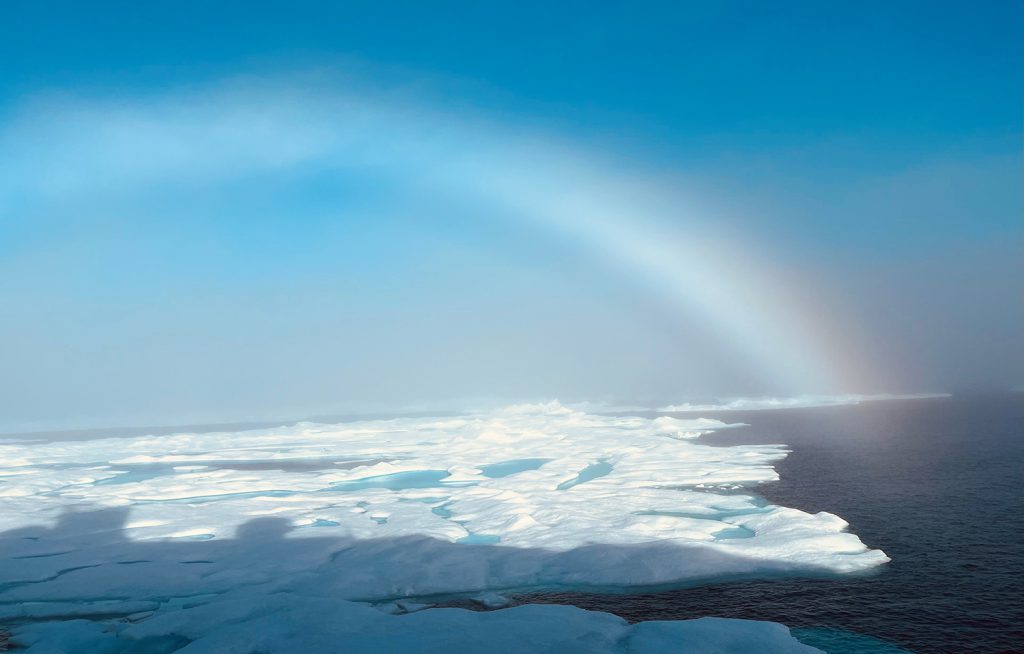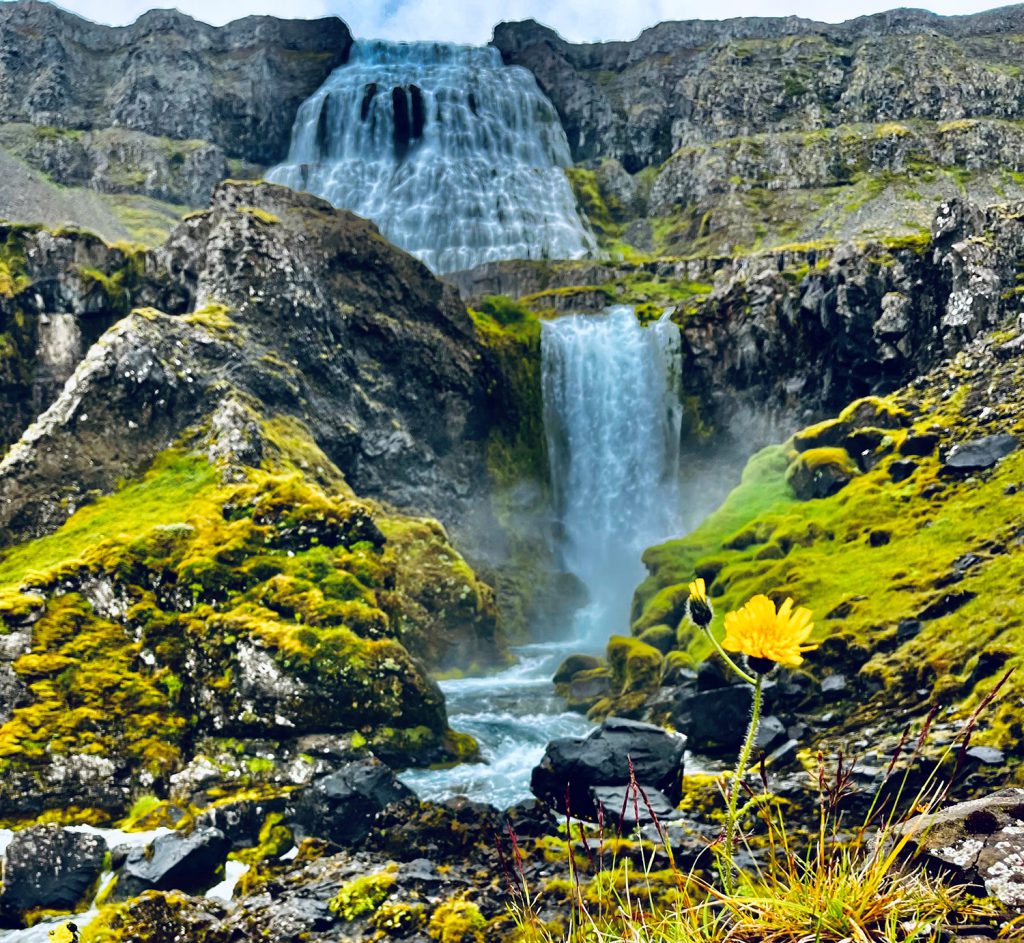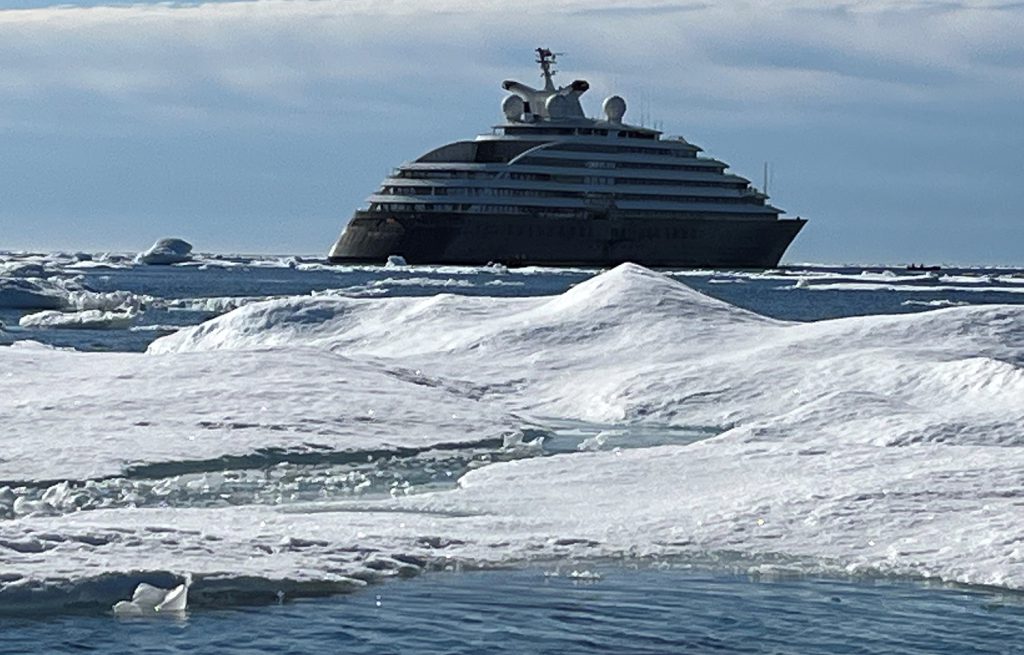
[Editor’s Note: NB Indy writer Richard Simon and his wife booked a one-month cruise from Greenland through the Northwest Passage in August and September. This is Simon’s recounting of his adventures during that cruise.]
Please excuse this piece of travel advice: Don’t ask directions to Qeqertarsuatsiaat, Qeqertarsuaq, or Ittoqqortoormiit unless you know how to pronounce them, lest you find yourself in Kitssuarasuit, Quasigniannuit or Kallaallitnunaeqqissismattaq.
To that end, it may be better to book a cruise to Greenland and then let the ship’s navigator find their way en route to some of the most indescribably “Wow!” land-and-seascapes the earth has to offer.
Jagged, mountainous upthrusts flank countless deep water fjords gouged out over the millennia by infinitesimally advancing and retreating glaciers — and it’s a challenge to visually embrace this island’s immensity, beauty and history in the process.
When the countless icebergs float into view, then slip silently by, one cannot help to reflect on the ill-fated voyage of, yes, the Titanic.
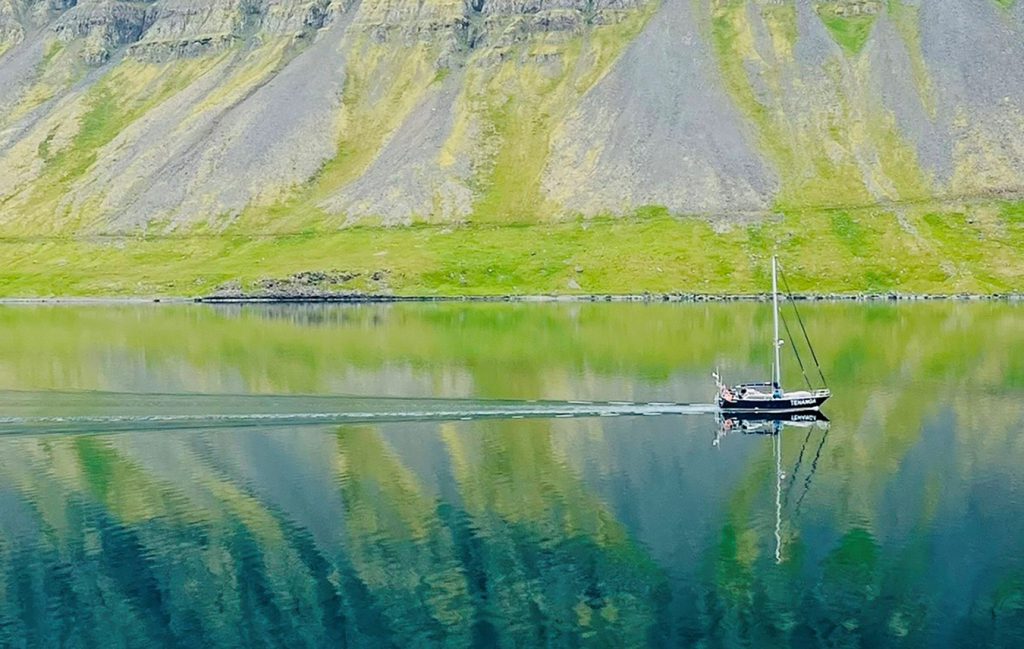
But Scenic Cruise Line’s “Eclipse 1” sports an ice-strengthened hull, multiple watertight bulkheads below the waterline; redundant navigation, advanced propulsion, and state-of-the- art warning and communications systems, in addition to a highly competent, ice-qualified captain and crew.
In total, this package eradicates any unfounded fears of collision with an iceberg. Almost.
What’s even more remarkable is how the country’s pioneer inhabitants found their way here 2,500 years ago, and how they scratched a living from sea and rocky lands. To this day, some of their offspring from isolated villages spotted along the coast or deep into the fjords, still dip their lines into the fish-rich Greenland Sea.
Past the Arctic Circle
Ilulissat is a small, picturesque fishing town located approximately 220 miles north of the Arctic Circle; it’s a thriving community just recently introduced to ship tourism, and she borders the massive Illulissat Glacier, from which it is believed the glacier that sunk the Titanic calved.
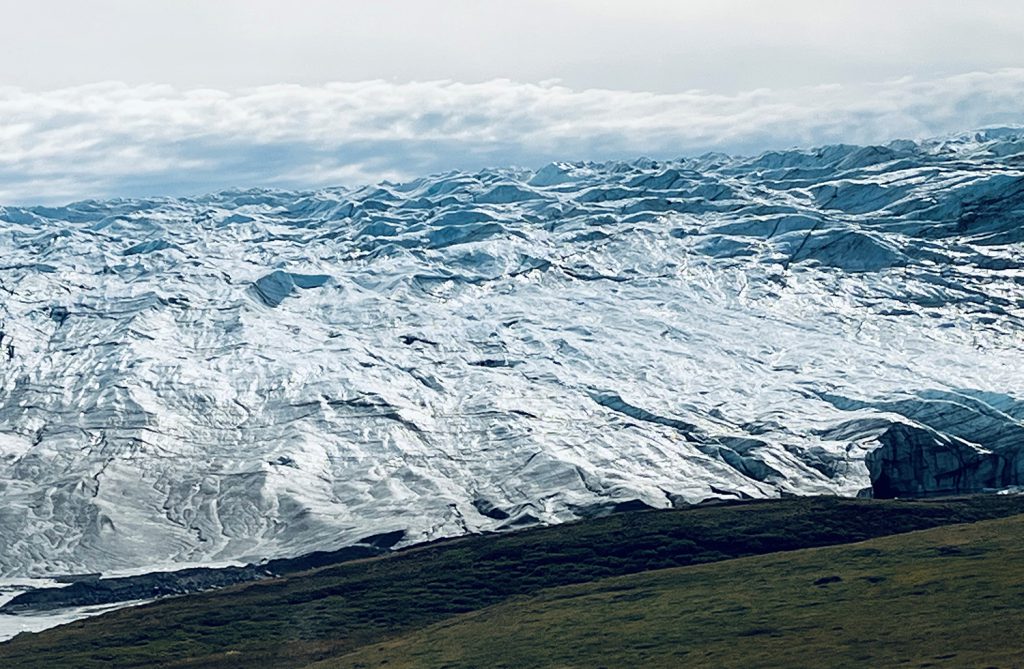
As you gaze across this massive ice river, one wonders, “Did the glacier do in the largest cruise ship in the world at that time, or did the captain?” “What if Titanic had left her berth one hour earlier or 60-minutes later?
A grey, rain-heavy morning greets this 500-foot-long “yacht” as she plows forward in bumpy seas toward the final Greenland destination, Kangerlussuaq — another town whose name rolls off the tongue like pickled whale blubber.
Half of the passengers will disembark, then catch a chartered aircraft to Copenhagen, Denmark, from where they’ll connect to various airlines on their global flights home. This writer continued in fantastic comfort across the Northwest Passage, to Nome, Alaska, with only an intuitive feel of how the Inuit, and other early occupants, survived so fundamentally in these wild lands.
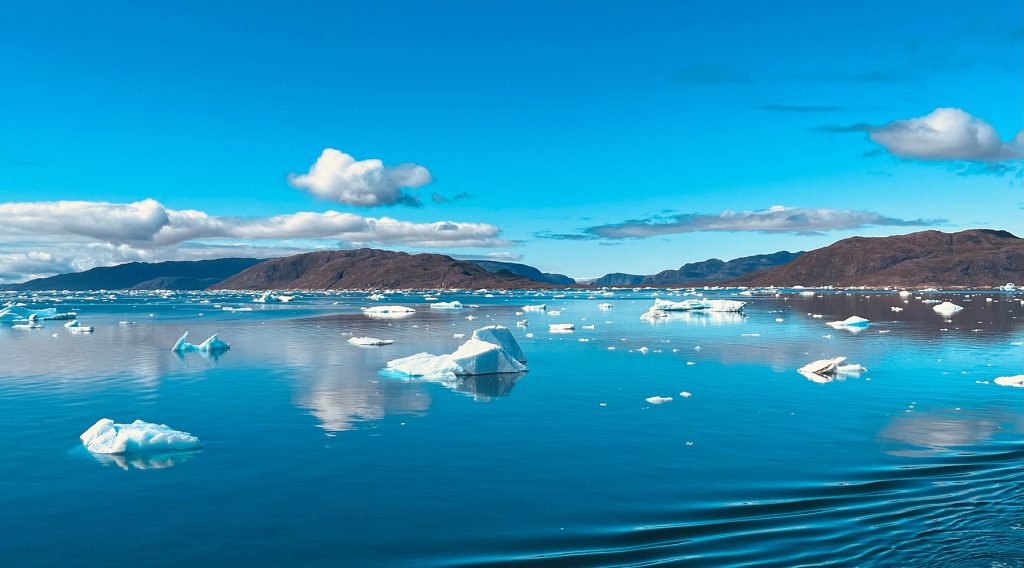
Crossing the Northwest Passage
From the total comfort of Scenic Cruises’ discovery yacht, Eclipse 1, making her debut crossing of the indescribably lonely Northwest Passage this past August and September, one has only to step out of their warm cabin to the veranda to “taste” what early explorers suffered — often for years at a time — when trying to bust through the ice to explore and complete the impossible transit in a search for a short cut to Asia.
The dangers were both known and unknown: severe, freezing winds that plummeted temperatures into the minus 70s; icebergs and ice floes that stopped the ships cold (pardon the pun) and could crush the sturdiest ships of the day; polar bears whose sole mission in life was (and is) to eat and reproduce; and occasionally a few local peoples who didn’t appreciate incursions to their lands.
Additionally, health issues and ill-preparation exacerbated the chances for failure.
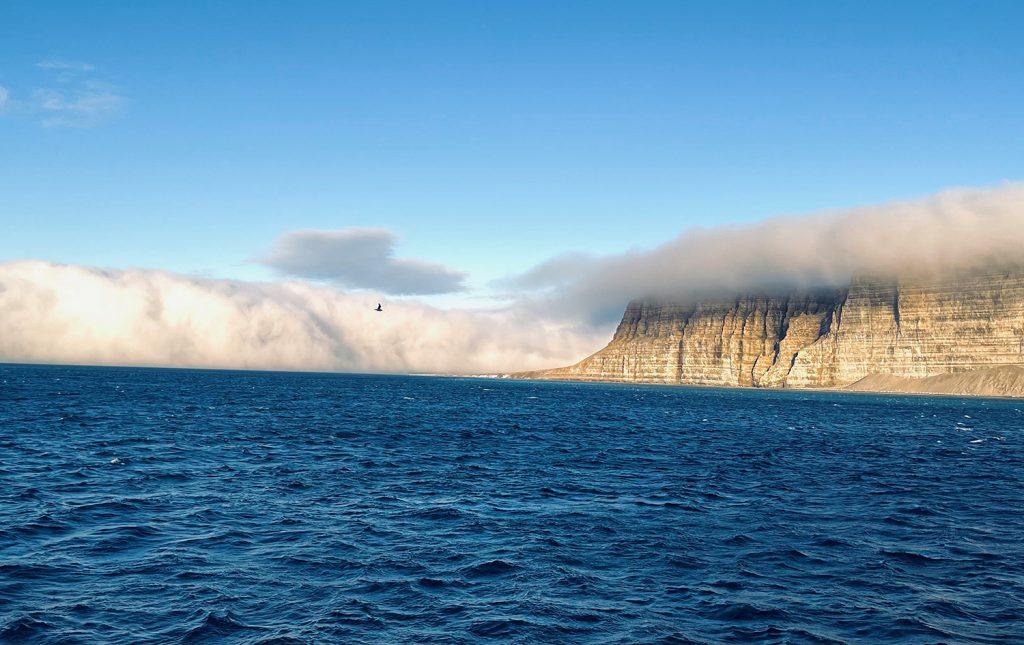
It’s hard to comprehend the inner strength that the explorers must have possessed in trying to achieve their goals. Many died in the effort, the most famous being British Captain Sir John Franklin aboard HMS Erebus and HMS Terror in 1845.
And those who either tried or succeeded are legendary, as well, starting with Christopher Columbus, and ending with Norwegian Roald Amundsen, who found a route in 1903-06, which allowed him to make the first complete passage. His success, however, was in a great part due to his befriending and learning from the Inuit people, who had inhabited the hostile remoteness for more than 2,500 years.
Since the first commercial crossing in 1961 by the tanker SS Manhattan, only 324 ships have completed the NW Passage. By comparison, between 13,000 and 14,000 ships transit the Panama Canal — annually.
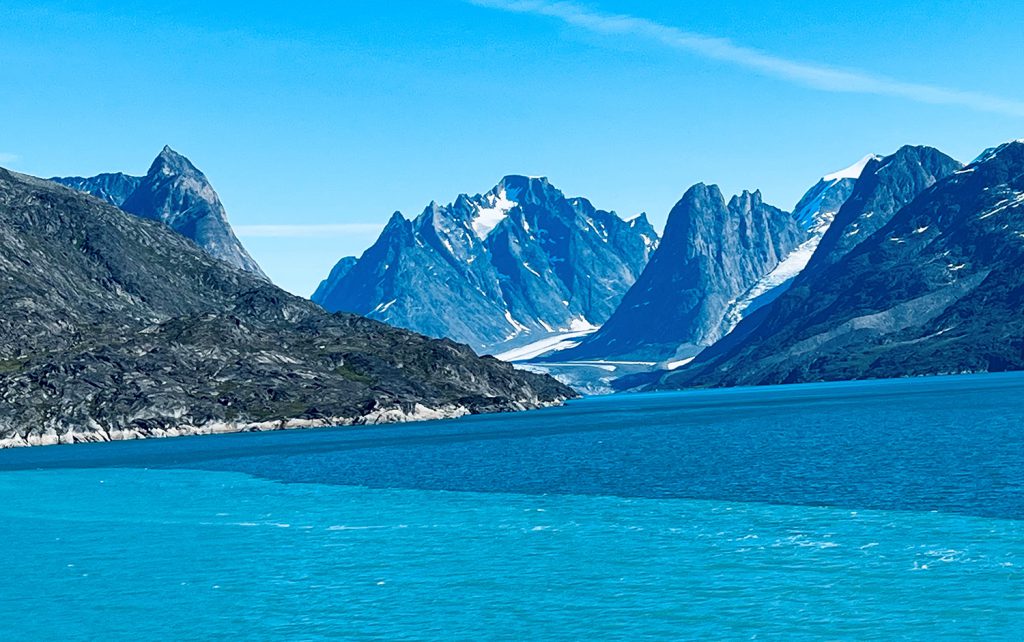
A Magical Adventure
More than 40 years ago, this writer brought his kayak to Pond Inlet, the eastern start of the NW Passage, to explore for nearly a month.
It was a magical adventure, with little sleep, as my buddy and I had to keep watch for polar bears with a possible taste for freeze-dried food rather than seal. It was great to return with my wife, Katherine.
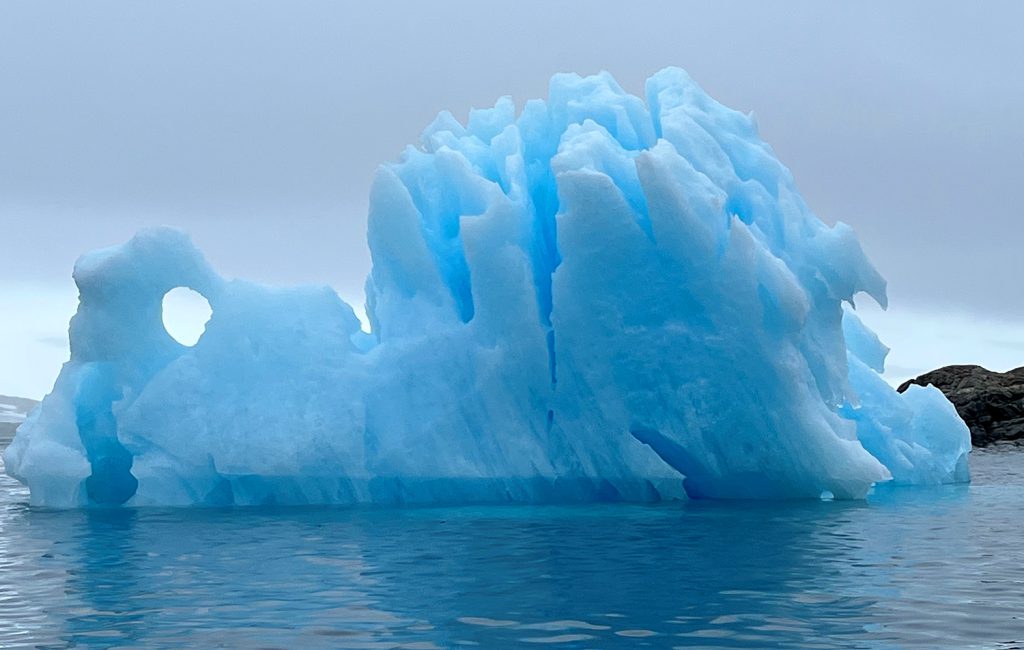
For a variety of reasons, passengers choose to take this not-inexpensive cruise: curiosity, sense of adventure, because no other cruise challenges remain for them; to be unique among friends; mind-blowing photographic opportunities, and more.
For this writer, it was to marvel at the glory of the geography, again, starting in Iceland, and Greenland; and to revisit the unique wildlife, from the variety of whales to musk oxen and polar bear.
Success!
(All photos by Richard Simon)
